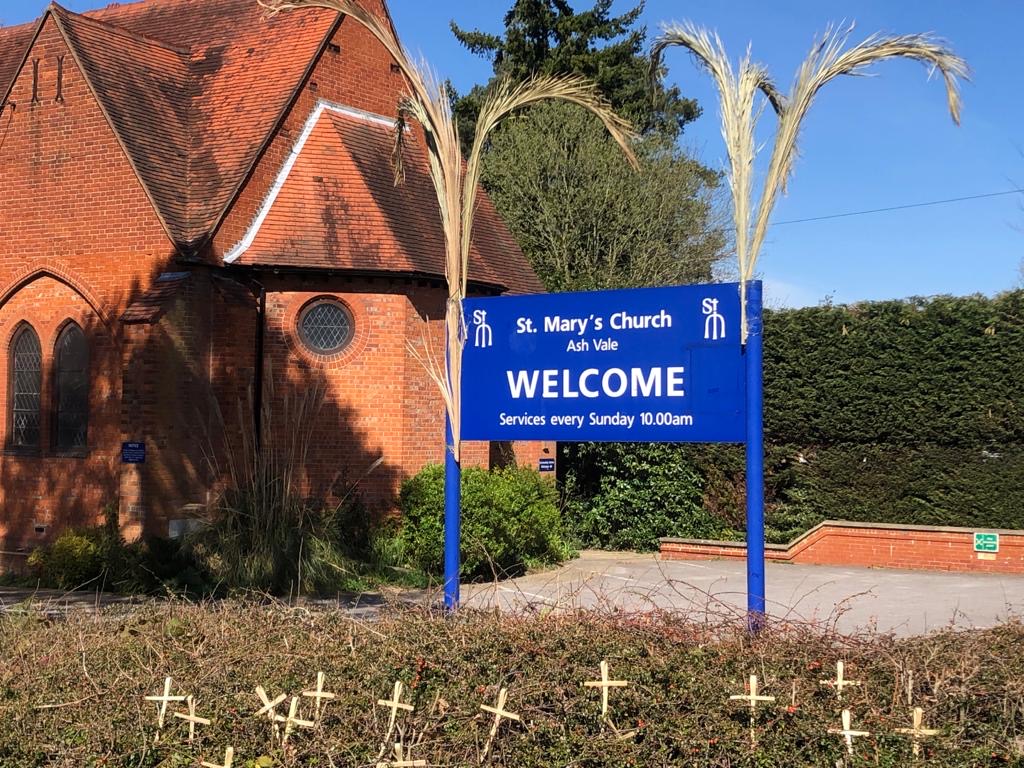By Mike Jacobs
In November 1959 I was demobbed from the Army after doing my National Service and returned to my old employment at Guildford Rural District Council. Here I met a charming young lady who lived in Ash and worshipped at the Methodist Church and thus I was introduced to the Church Family at Ash Vale Methodist Church (AVMC)
The church had been built in the 1870s, to cater for the increasing local population and the flourishing Wesleyan movement. At the time there was no Roman Catholic church in the village and only one Anglican church (St Peter’s) so the Methodist congregation claimed the honour of having the second oldest church in Ash. The site chosen for the new building was on the edge of Ash Ranges, at the northern end of Wharf Road, and originally included all the land where the Ash Vale Health Centre and Abbeywood Care Home now stand.
Methodist churches have always had a strong tradition of outreach to the community, particularly to young people and children. When I arrived, there was a thriving Sunday School at Ash Vale Methodist and I was soon recruited as a helper. Then, as I had previous training in youth work, I was invited to organise the Young People’s clubs – which I was very happy to do. A club for 18 to 25-year-olds already existed, known as ‘Powerpoint’, and it was decided to enlarge ‘Explorers’ for 11s to 17s and ‘Cockleshell Club’ for 7s to 11s. I put up a hand-drawn poster announcing the new clubs at Hawkins Family Butchers in Ash Hill Road, and within a month we had recruited nearly two hundred new children and had to start a waiting list. Other youth groups such as Girl Guides, Brownies and Rainbows also used the church as their meeting place.
The building consisted of only three main rooms: the Church, the Schoolroom and the kitchen. With so many people using the building it became a natural development for meetings to start off in the Schoolroom but for activities to migrate outside. This is where major use was made of Ash Common, which included the Ranges. Members of the Cockleshell Club in particular would repair to Range four in huge numbers and we had a great time with wool trails (this involves a race to gather up pieces of wool left along the route by the leaders), rounders and cricket and innumerable activities that involved hunting and hiding among the woods and bracken of the Common. Many other groups and individuals from the community made good use of this public amenity right on our doorstep.
The local St John Ambulance was on call 24/7 and was garaged near the Swan Hotel. They would often use the Range Road when answering emergency calls. I also remember that when I was learning to drive, this is where I practised. The roads within the ranges were all open and commuters would often drive along the Range Road from Wharf Road junction with Shawfield Road to Heath Vale Bridge Road.
At that time the whole of Ash Common was open to the public. The only restricted areas were those designated as Shooting Ranges which were marked with a line of flags flown when troops were using the Range. Everything outside the line of flags was considered to be common land and was available for the general public to use. Interestingly, the version of Google Maps which is based on the Ordnance Survey shows this situation clearly. Only the areas between the line of flagpoles are designated as MOD responsibility.
When I did my National Service with the Queen’s Royal Regiment, my basic training took place on local MOD land including Ash Ranges. We had the disciplines necessary for using these facilities drummed into us and after using the Ranges for live firing we had to make a very solemn (secret) declaration before being taken back to barracks.
The Range at Ash was a static range where firing took place from fixed firing points towards the butts where the targets were displayed. The butts were backed by a huge earth bank that caught all the rounds as they were fired. No firing was allowed that would let any stray shots escape the catchment of that bank of earth behind the Butts. In fact, it is unlikely that a round could be discharged outside the controlled area. The firing points were clearly marked and every soldier knew exactly what was expected of him to ensure no one was put at risk.
From comments made by the MOD and DIO, and the fact that the designation of a safety zone has been considered necessary, it seems that current soldiers lack the discipline that I and my colleagues followed. This is an indictment of current training practices. We never had any accidents while using the Ranges and I have never heard of any in the last 60 years.
There was a very small number of Range Wardens, (unlike today where there seem to be more MOD police in the area than members of Surrey Constabulary), and the local population did their bit in ensuring the Common was kept clean and tidy. When the MOD brought cattle in to graze and control the vegetation, there was little opposition, but the presence of cattle required the creation of a fence, and It seems that over time the DIO have taken the successful erection of such fences as constituting a carte blanche to increase the fenced area and impose their own illegal restrictions. The barriers are now serving to keep people out rather than to keep cattle in.
This is an abridged version of a longer piece which Mike has written on his memories of The Ranges. We hope to publish a whole collection in the near future, please email us your memories too! parishioner@ash-vale.org.uk See https://www.ashranges.com for more Ash Ranges news.
